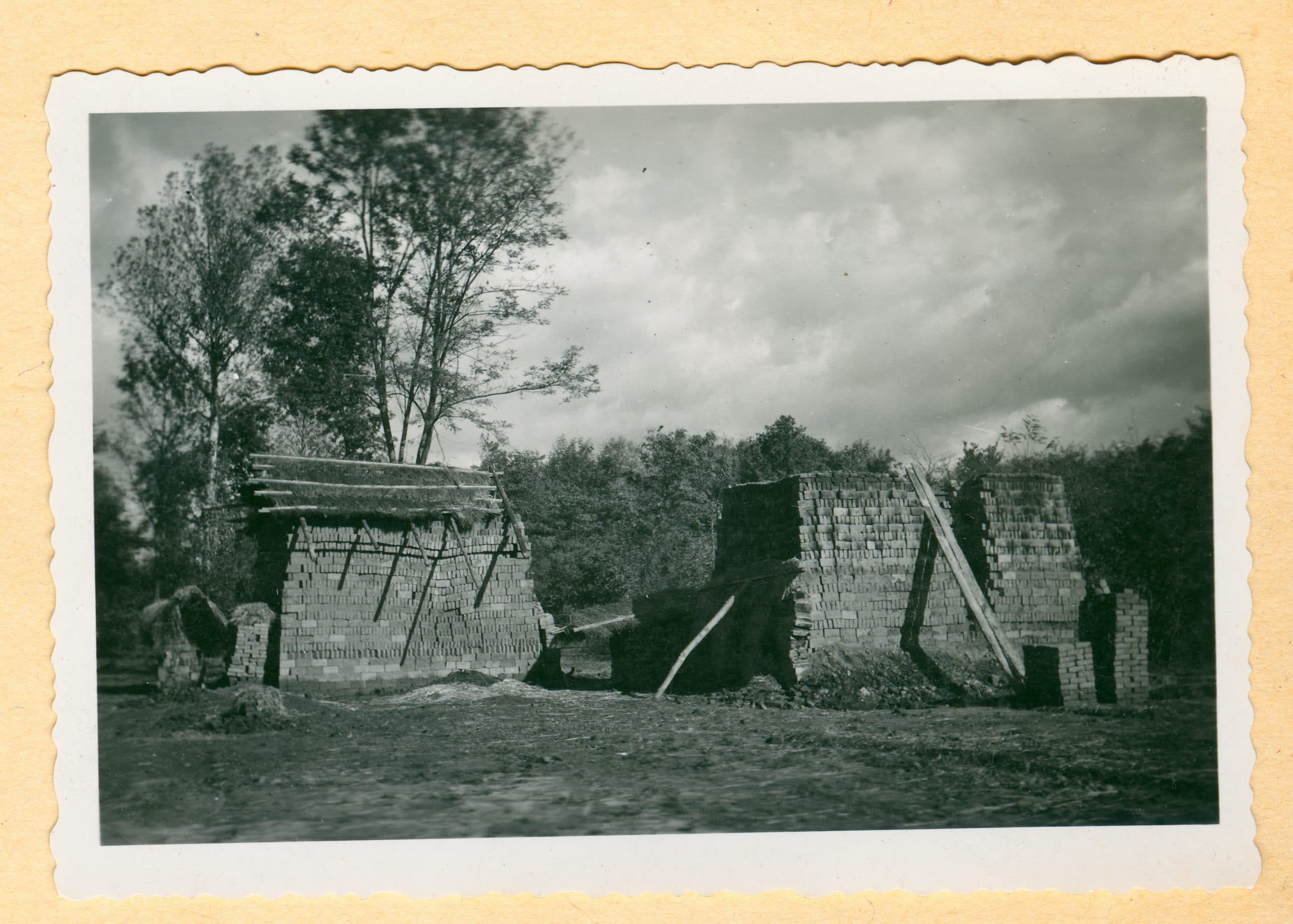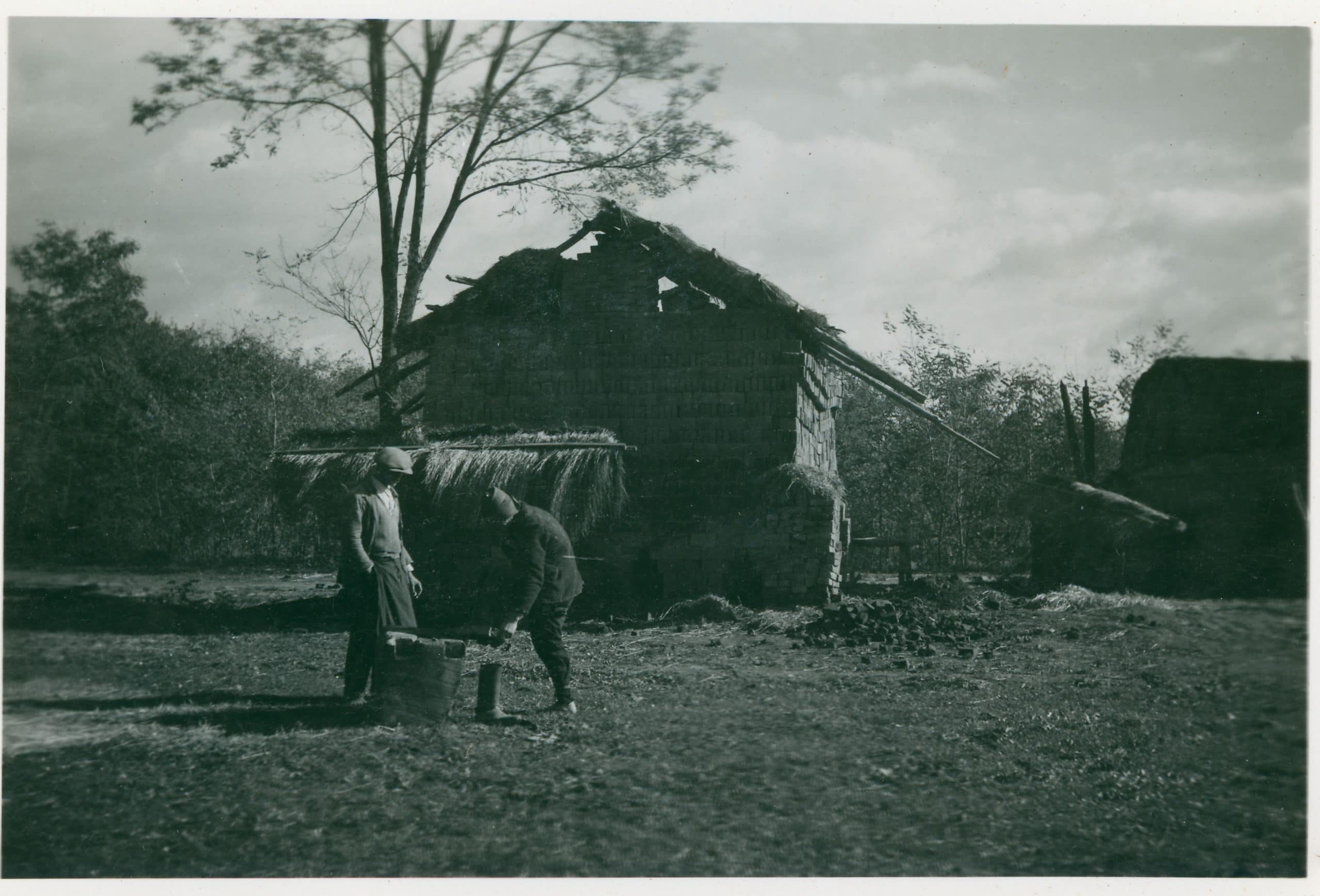- Cross-border database on the cultural heritage of the Slovenian-Hungarian cross-border region – from 120 selected settlements of the Prekmurje Region in Slovenia and Vas County in Hungary
Archive Material

Brick drying in Melinci
document
unknown author
1935
paper
Melinci was long known for making brick, or “cigel”. The clay deposit, the workforce and the skilled craftsmen who knew the art of brick making and firing contributed to the survival of brick making until the 1970s. Most important, however, was the economic aspect: industrial bricks were too expensive. Every day, 4,000 raw bricks were made. The blatar prepared and mixed the clay, the foringaš shaped the brick in a brick model, while the odnašarca dried the bricks in a room dedicated to this purpose. The 1935 photograph shows drying bricks in two large piles.
Information on digitization
- Name of site
- Melinci
- Other settlement names
- Muramelence, Melincz
- Length
- 2 fotografiji
- Place of origin/discovery
- Melinci
- Name of institution or personage holding object; identification number of object
- Pokrajinski arhiv Maribor / Maribori Területi Levéltár Arhivski fond: SI_PAM/1702 Zbirka albumov fotografij in razglednic, TE 20, ovoj 2-16, F-4/129, F-4/130, SI_PAM/1702/005/002/001_00050
- Written sources
- Pšajd, J., 2012. Ciglarstvo na Melincih. V: Glasnik Slovenskega etnološkega društva, številka 1/4, 2012. Str. 121–122.
https://www.dlib.si/stream/URN:NBN:SI:DOC-IH8P0BLY/4bc302b1-ed15-4302-8484-165a12890c33/PDF - Web page
- Jelka Pšajd: »Ciglarstvo na Melincih«, v Glasnik Slovenskega etnološkega društva, številka 1/4, 2012, str. 121–122 https://www.dlib.si/stream/URN:NBN:SI:DOC-IH8P0BLY/4bc302b1-ed15-4302-8484-165a12890c33/PDF
- File name
- PAM_072_B_0002
- Resolution
- 1200 x 1200 dpi
- Restrictions on use
- Brez omejitev
- Date of documentation
- 2018-10-16
- Person documenting
- Ksenija Rojht, Gordana Šövegeš Lipovšek
Photo gallery


